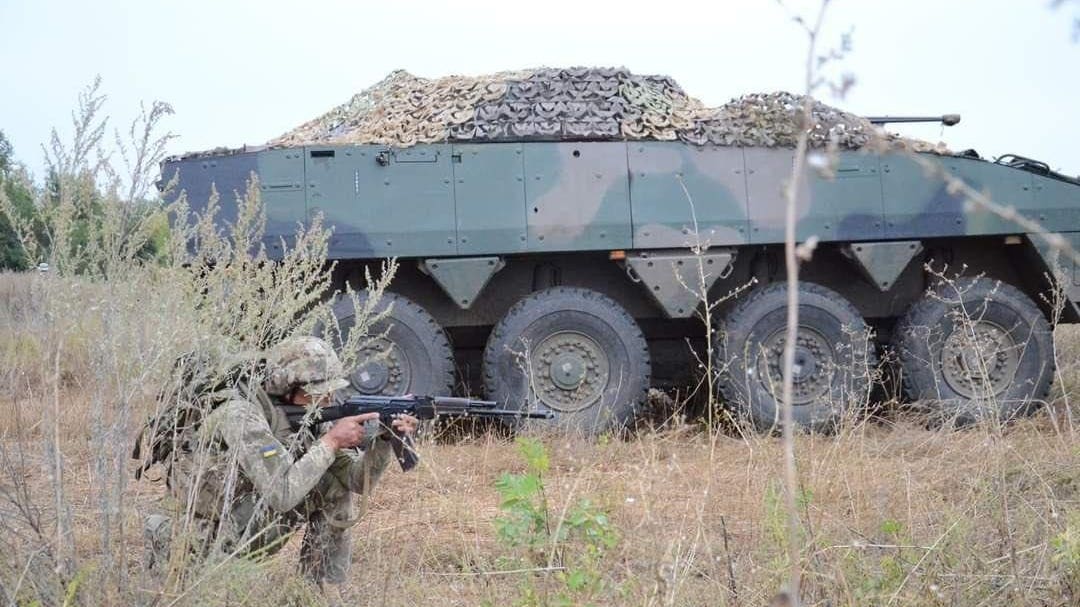Ukraine’s southern counteroffensive isn’t one major attack. It’s at least three—and one of them isn’t even in the south.
It’s in the east, on the flanks of Bakhmut, that iconic city that Russian forces spent a year—and thousands of lives—capturing in a campaign that culminated in May.
That attack is succeeding. But at a high price to Kyiv’s forces.
A Ukrainian assault on Russian positions outside Andriivka, just south of Klishchicka on the southern edge of Bakhmut, apparently failed on or around Sept. 24—and left behind no fewer than eight infantry fighting vehicles, including five BMP-2s and three new Polish-made Rosomak Wolverines.
It’s unclear which brigade the vehicles belonged to. Possibly the reformed 22nd Mechanized Brigade, which also operates an eclectic mix of PT-91, T-72AMT and T-72 Ural tanks.
The strategic dynamics around Bakhmut are simple. As the Russians deploy more and more of their forces to the south in an effort to blunt the Ukrainian attack along the 50-mile axis threading from Robotyne through Tokmak to Russian-occupied Melitopol, the relative paucity of Russian forces in the east represents an opportunity for the Ukrainians to regain territory they lost in the first year and a half of Russia’s wider war on Ukraine.
In the 15 weeks since the counteroffensive kicked off, Ukrainian brigades have advanced several miles north and south of Bakhmut. Especially south. It helps that Kyiv has assigned one of its most aggressive brigades—the 3rd Assault Brigade—to the sector south of Bakhmut.
But the Russians have dug in, and the terrain features include wide-open fields that the attacking Ukrainians must cross at enormous risk to people and equipment. If the 3rd Brigade’s successful assaults are the reward of the Ukrainians’ eastern counteroffensive, failed assaults like that around Andriivka are the cost.
Those wheeled Wolverine IFVs the 22nd Brigade or a sister unit lost outside Andriivka on or around Sept. 24 are the first of the type that Kyiv’s forces have written off since the Polish-made vehicles began arriving this spring.
The Wolverine is fast, with a top speed of 60 miles per hour thanks to its 500-horsepower diesel engine. And its 30-millimeter autocannon—the same gun that arms the U.S. Army’s Europe-based Strykers—is a killer.
A Wolverine has three crew and seats eight infantry. If the vehicle has a flaw, it’s that the Polish army initially insisted on an amphibious capability for its own Wolverines. In other words, the Wolverine had to be light enough to swim short distances like a very slow, awkward boat. That meant reducing armor protection.
Losing three Wolverines in a single assault surely stings for the Ukrainians. It’s perhaps cold comfort that many more Wolverines are coming.
The Polish government back in April pledged to Ukraine 200 Wolverines, eventually making the 25-ton, eight-wheel IFVs the most numerous Western-style fighting vehicles in the Ukrainian inventory alongside the 200 M-2 tracked fighting vehicles and 200 Stryker wheeled IFVs that the United States so far has pledged to Ukraine.
It’s perhaps more comforting to the Ukrainians that, even if that attack outside Andriivka failed, the overall Ukrainian effort in the area—including in Andriivka—is succeeding.
There’s a railway running north to south just east of Andriivka. It anchors Russian positions south of Bakhmut. Along much of the sector, the Russians already have retreated to the railway. And on Sept. 23, Ukrainian troops raised their flag in Andriivka.
Read the full article here





